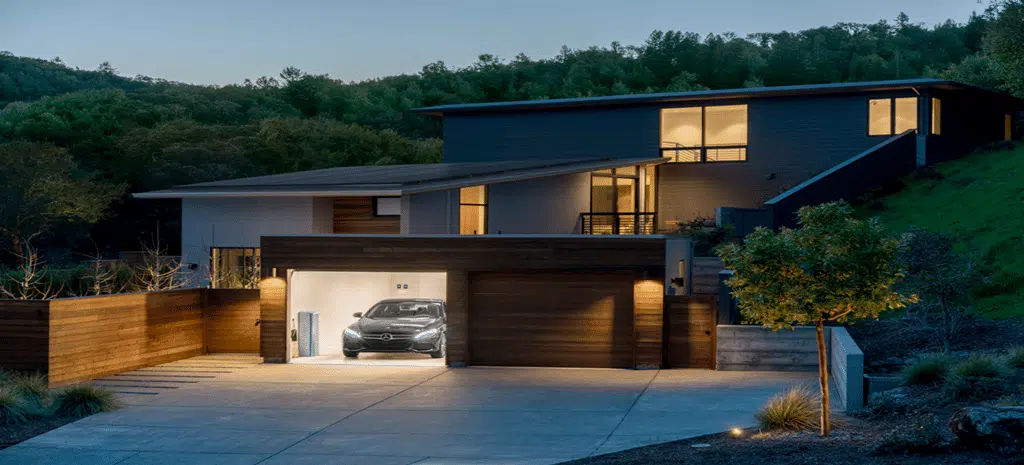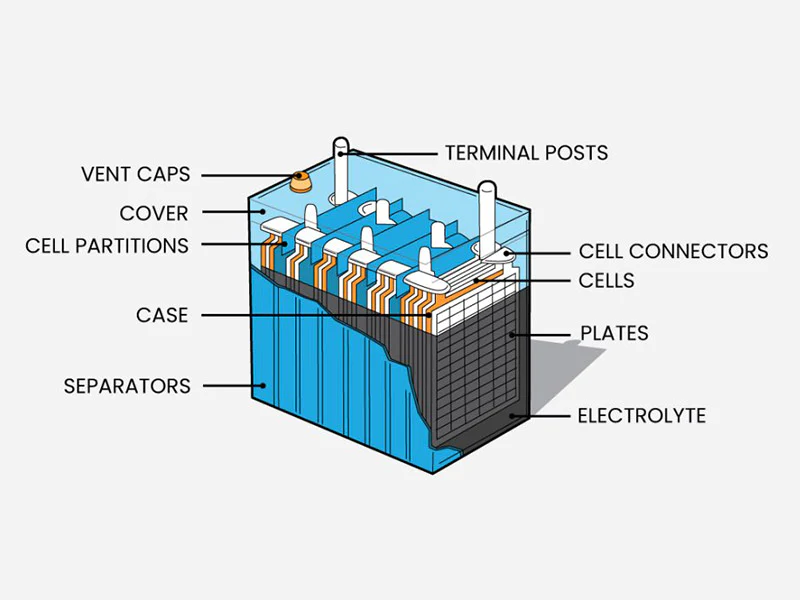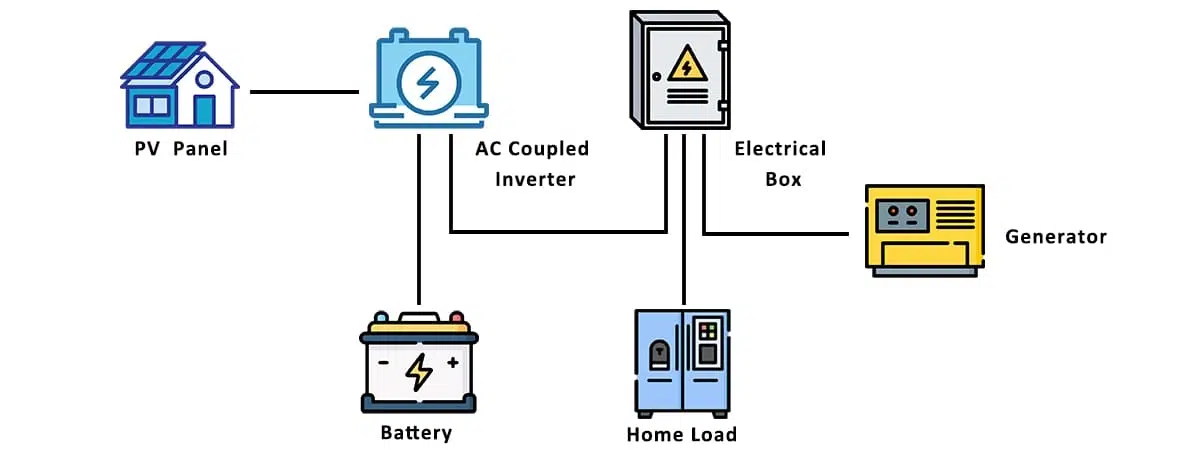
Con la creciente popularidad del nuevo mercado energético, La demanda de baterías de almacenamiento residencial también está en aumento. Este artículo tiene como objetivo llevarlo a través de una comprensión integral de las baterías de almacenamiento residencial..
Espero que te sea útil.
Introducción a las baterías de almacenamiento residencial
Las baterías domésticas están compuestas de baterías y componentes relacionados. Como dispositivo de almacenamiento de energía doméstico, Pueden facilitar el almacenamiento del exceso de electricidad para el uso posterior por parte de los usuarios.
El sistema de almacenamiento de energía de la batería puede maximizar la optimización del consumo de energía durante el uso, Asegurando así una operación eficiente. También puede responder muy rápidamente y mantener la operación durante los cortes de energía..
La tendencia energética utilizada por la sociedad está haciendo la transición hacia la energía renovable, y las baterías de almacenamiento solar se destacan entre muchos tipos de baterías de almacenamiento. Previamente, Las baterías se usaron principalmente en sistemas solares fuera de la red.
Con el avance de la tecnología de batería de litio, Las personas se han interesado más en aplicaciones como almacenar exceso de energía y garantizar el suministro en condiciones climáticas adversas, y también existe una demanda de formas más independientes de obtener energía.
Beneficios de las baterías de almacenamiento residencial
Independencia energética:
Las baterías de almacenamiento residencial almacenan la energía solar no utilizada durante el día y la liberan para cumplir con el suministro de electricidad durante la noche o cuando no hay suficiente luz solar o condiciones climáticas adversas.
Esta no es solo una decisión de beneficio económico, pero también basado en la protección y la utilización completa del medio ambiente.
Al mismo tiempo, Esto puede ayudar a los depositantes a reducir su dependencia de la red eléctrica, especialmente para los usuarios que tienen facturas de electricidad costosas o les resulta difícil evitar los períodos de consumo máximo de electricidad.
Ahorro de costos:
Las baterías de almacenamiento residencial primero reciben energía de diferentes situaciones para la conversión y el almacenamiento., que puede provenir de la cuadrícula conectada a la cuadrícula o de los paneles solares que instala. Si su región cobra tarifas más altas durante los períodos máximos de uso de electricidad, Puede almacenar energía a través de las baterías y usarla por la noche.
Si está equipado con paneles solares, Puede ahorrar más costos de electricidad porque inicialmente almacenado durante el día es la electricidad gratuita convertida de energía natural.

La reducción de los costos también se reflejará en usarlo para cargar vehículos eléctricos. En comparación con los costos de combustible en constante aumento de los vehículos de gasolina, La amplia aplicabilidad de las baterías domésticas es realmente maravillosa.
Energía de respaldo:
La capacidad almacenada es la garantía de la duración de la batería. Con baterías de almacenamiento residencial,No hay necesidad de preocuparse por los cortes de energía o el agotamiento de la energía en clima extremo. Y responde muy rápido, haciéndolo un compañero muy confiable.
El uso de recursos ambientales renovables, como la electricidad y la energía solar, también es una fuerza de respaldo. It can reduce emissions and rely on non renewable resources such as coal, which is very environmentally friendly.
Tipos de baterías de almacenamiento residencial
Baterías de iones de litio
Lithium ion batteries are currently the most mainstream type of battery used in the market and are developing rapidly.
Ventajas
It can achieve thousands of charge and discharge cycles.
2. It can discharge a large amount (hasta 80-90% de la capacidad total).
3. It is suitable for various ambient temperatures, which is a very important and ideal feature.
4. Larga vida útil, almost sustainable for over 10 años bajo uso normal. And its cycle life, eso es, the total number of charging/discharging cycles
Lithium ion batteries can typically run thousands of cycles and perform exceptionally well.
Shortcoming
1. The problem of replacing large lithium batteries after their lifespan is exhausted, but large batteries all suffer from this problem. We will design a full line plan during installation, so there is no need to worry.
2. Household battery rarely experience fires and thermal runaway. Sin embargo, for safety reasons, lithium batteries must only be installed in specific locations; Usually installed near solar inverters.
3. They need to be recycled and undergo pollution-free treatment. With the development of the market and the standardization of the industry, these will be arranged more comprehensively.
Baterías de plomo-ácido
Lead acid batteries have traditionally been used in off grid power systems, but they are currently not widely used.

Traditional lead-acid batteries are mainly used in automobiles, but they can also be applied to larger energy storage systems. This battery technology is already very mature and has been practically applied in home energy storage systems.
Sin embargo, en los últimos años, attempts have been made to improve the performance of lead-acid batteries, but no breakthrough has been made compared to the advantages of lithium-ion batteries. And with the continuous development of new battery technologies, its market share is gradually being divided.
Ventaja
They are relatively cheap in price.
2. Due to a sufficiently mature market process, there is a complete warranty and recovery process.
Shortcoming
1. It is bulky and requires more space for installation and placement than equivalent lithium-ion batteries.
2. It is sensitive to high ambient temperatures, which can affect its applicable regional environment and shorten its service life in high-temperature environments.
3. Slow charging cycle.
4. Regular maintenance is required.
It can be compared that lithium batteries have advantages such as relatively small space requirements, size advantages, low maintenance costs for battery health, and longer warranty periods during after-sales service.
Al mismo tiempo, 24v lithium battery and 12v lithium ion battery are two types of lithium battery models that are particularly popular among residential users or outdoor users.
Otras tecnologías emergentes
Liquid flow batteries are generally used for larger energy storage applications, such as large-scale commercial and utility scale applications. It is one of the most ideal lithium ion alternatives.
Although it has not yet become popular as a household battery, the high safety of flow batteries makes them have potential in some specific household energy storage devices.
Considering the manufacturing cost and system difficulty, further technical support is needed for the popularization of flow batteries in the field of household energy storage.
Ventaja
1. Excellent discharge depth (Departamento de Defensa).
The meaning of discharge depth is the amount of energy that can be safely used without accelerating battery degradation. It can discharge up to 100% de su capacidad.
Most batteries need to maintain a certain level of charge to avoid damage. Lithium batteries can be safely discharged to around 80-90%. Lead acid batteries can usually discharge up to around 50-60%, while flow batteries perform well on this standard with no residual discharge and no power consumption over time.
2. It operates well in high ambient temperatures and has no fire hazards.
3. Relatively easy to recycle.
4. Its service life can last for more than 10 años.
Shortcoming
En comparación con las baterías de iones de litio, they are relatively expensive.
2. It cannot tolerate cold well (abajo 15 °C).
3. It requires regular maintenance and warranty, which may result in temporary suspension of service.
¿Debería comprar una batería de hogar??
Podemos analizar y medir si es adecuado para nuestra propia situación en función de sus ventajas y desventajas.
Ventajas
Todavía hay debate sobre si el sistema de batería será rentable. Su alto costo inicial y su largo período de retorno de inversión significan que no es un buen proyecto de inversión con frecuencia corta, respuesta rápida, y altas devoluciones.
Pero como el precio de electricidad de la red de energía solar (la puntuación obtenida al ingresar el exceso de energía solar en la red) disminuye, en realidad comienza a beneficiar la batería. Para muchas personas, Esperar ganancias no es el factor principal para comprar baterías. Hay muchas razones por las cuales los hogares invierten en almacenamiento de baterías, Desde formas de uso mejores y más económicas hasta fuentes de energía de respaldo en situaciones especiales.
Our clients will consider independent energy and freedom of use as reasonable factors. Batteries can significantly help reduce household energy dependence and accelerate the transition and development towards renewable energy power systems.
Desventaja
Como se mencionó anteriormente, its investment cost may be relatively high in the early stage and there may be some complexity, such as the need for additional monitoring equipment to observe and use. Al mismo tiempo, it will have certain environmental requirements and basically needs to be installed in an area that avoids direct sunlight.
¿Qué tamaño y tipo de batería debe comprar??
Before continuing to learn more, you should have some understanding of some basic concepts. The battery capacity is measured in kilowatt hours (kWh), and most batteries are modular and can be combined, so satisfactory battery capacity designs can usually be obtained based on demand.
It is worth noting that the term used in lead-acid batteries is ampere hours (ah), which is now largely replaced by kWh and has become a modern industry standard.
1. Understand the daily electricity consumption of households
The first thing you should know is how much electricity your household consumes in kilowatt hours on average within 24 horas, which will be easily calculated when purchasing.
Generalmente hablando, an ordinary household consumes approximately 20-30 kilowatt hours of electricity per day.
2. Consider the influence of seasonal temperature
In summer or winter, the average household’s electricity consumption may be higher or lower. This not only depends on the season, but more precisely on the climate and temperature of your location.
Another factor to consider is the electricity consumption during peak hours, which is usually the time when the electricity bill is highest, and the cost depends on the local power supply bureau.
Modo de fuente de alimentación en el hogar
There are four main power supply methods to choose from in your home.
Conexión a la red (without solar energy)
This is the most primitive and basic setting, and the electricity used in your home comes from the main power grid. There is no solar cell equipment at home.
Grid connected solar energy (without battery)
It is currently a typical household configuration with solar panels in development. There is no home battery backup without solar in this system,and the working setting of the solar panel is to provide power during the day. Families usually use this type of electricity first, and seek help from the grid for additional electricity needed during days with insufficient sunlight, nighttime, and high electricity consumption.
Grid connected solar energy battery (also known as “hybrid” system)
This group includes solar panels, BESS, inversores híbridos (or possibly multiple inverters), and connections to the main grid. Solar panels provide electricity during the day, and households usually use solar energy first. The unused energy is used to charge the battery and store it.
During periods of high electricity consumption, or during extreme weather, nighttime, and days with insufficient sunlight, households obtain electricity from energy storage systems. Smart solar savings will help you have a better daily life.
Off grid
This type is not connected to the national power grid system and is usually used in remote areas where it is not possible to connect to the grid or installation costs are too high.
All of your household’s electricity comes from solar panels or other types of energy such as wind power. Batteries are the main power source and are only used at night and on days with insufficient sunlight. The last backup equipment is usually a diesel generator.

It is usually much more complex and expensive than grid connected systems, and also requires more solar energy storage, which requires battery capacity. It needs an inverter that can withstand high loads, as all usage relies on it, so peak demand needs to be considered. Houses that adopt off grid systems need to be equipped with high-quality energy-saving loads and undergo long-term management and maintenance.
Instalación e integración
Sizing and Capacity:
Regardless of the type of energy storage system, many factors need to be considered when determining components and selecting their sizes.
When designing a plan, the required size should be determined based on the homeowner’s energy needs and storage capacity, taking into account the size of the house, the household’s energy usage, and the average daily production of renewable energy in the local environment.
Installation Process:
The next step is to select the type of battery to be installed. This requires consideration of factors such as your budget, the expected lifespan of the ideal battery type, y necesidades de mantenimiento. After determining the battery type, prepare the installation site. This will involve the size of the battery casing, preparation of electrical connections, and ensuring that there are no potential hazards during construction.
Integration with Renewable Energy Systems:
The final step in the installation process is to connect it to the power system. This involves installing a battery inverter that is compatible with home solar battery bank, which converts the DC stored in the battery into AC power that can be used in the household power system.
Puede Contáctenos to obtain design proposals and related quotations. Al mismo tiempo, it is necessary to determine whether the price includes the cost of inverters and additional electrical work.
Incentivos y consideraciones financieras
Federal and State Incentives:
Some government subsidies or planning policies can provide certain economic compensation to some families in this regard.
Sin embargo, it should be noted that it complies with policy terms, such as the Small Technology Certificate (STC) economic incentives for solar panel systems, which only apply to installed solar panels and not to batteries.
The government will also have some relevant loan plans for you to choose from.This also varies depending on your location and can be accessed on the local government website. These policy plans will be frequently revised, so it is also necessary to determine their timeliness and be sure to keep an eye on the available content in your region in real time.
Retorno de la inversión:
The value it adds to energy storage systems is like a diamond that is forever passed down. Its return on investment is clearly a long-term feedback process, but once equipped, it is also a product that is regularly and frequently used, without considering depreciation.
Al mismo tiempo, it will also provide more convenience in daily life.
Mantenimiento y mantenimiento
Mantenimiento regular:
No matter what type of battery, there will be a certain degree of wear and tear during use, which is inevitable, so regular maintenance and inspection are required.
These service terms will also be equipped during cooperation.
Warranty and Service Plans:
In principle, most types of solar cells can be used for 10 years or even longer without being affected by extreme temperatures during normal use. The most basic service is that the warranty period of the battery will be as long as its service life, which helps to improve the user experience for our customers. The warranty period for most models is 10 años.
Many consumers on websites have indicated that so far, most household battery have a good user experience, and some battery failure issues have been perfectly resolved by suppliers. The performance of the battery is expected.
If there is anything else you want to know, no dude en Contáctenos en cualquier momento.
Conclusión
The main advantage of household battery is that they are products that are in line with market development and will not be phased out. Al mismo tiempo, it is convenient for your life, reduces dependence on the power grid, and can also save you more electricity bills. It is a product that is used for a long time, and its energy storage and utilization are also very efficient.
This investment is very worthwhile.
